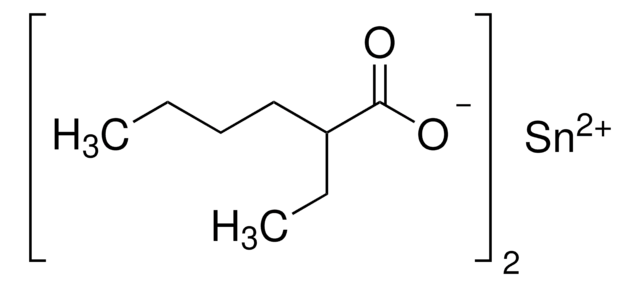8.08697
o-Xylene
for synthesis
Synonym(s):
1,2-Dimethylbenzene
About This Item
synthesis grade
16 mmHg ( 37.7 °C)
7 mmHg ( 20 °C)
Recommended Products
grade
for synthesis
synthesis grade
Quality Level
vapor density
3.7 (vs air)
vapor pressure
<0.1 atm ( 21.1 °C)
16 mmHg ( 37.7 °C)
7 mmHg ( 20 °C)
Assay
≥98% (GC)
form
liquid
autoignition temp.
867 °F
expl. lim.
7 %
dilution
(for synthesis)
refractive index
n20/D 1.505 (lit.)
bp
143-145 °C (lit.)
mp
-26--23 °C (lit.)
transition temp
flash point 30 °C
density
0.879 g/mL at 20 °C (lit.)
storage temp.
2-30°C
SMILES string
Cc1ccccc1C
InChI
1S/C8H10/c1-7-5-3-4-6-8(7)2/h3-6H,1-2H3
InChI key
CTQNGGLPUBDAKN-UHFFFAOYSA-N
General description
Application
- As an additive of dope solutions in the preparation of PES (polyethersulfone) hollow fiber membranes.
- To produce phthalic anhydride.
Analysis Note
Density (d 20 °C/ 4 °C): 0.878 - 0.881
Identity (IR): passes test
Signal Word
Danger
Hazard Statements
Precautionary Statements
Hazard Classifications
Acute Tox. 4 Dermal - Acute Tox. 4 Inhalation - Aquatic Chronic 3 - Asp. Tox. 1 - Eye Irrit. 2 - Flam. Liq. 3 - Skin Irrit. 2 - STOT SE 3
Target Organs
Respiratory system
Storage Class Code
3 - Flammable liquids
WGK
WGK 2
Flash Point(F)
89.6 °F - closed cup
Flash Point(C)
32.0 °C - closed cup
Certificates of Analysis (COA)
Search for Certificates of Analysis (COA) by entering the products Lot/Batch Number. Lot and Batch Numbers can be found on a product’s label following the words ‘Lot’ or ‘Batch’.
Already Own This Product?
Find documentation for the products that you have recently purchased in the Document Library.
Customers Also Viewed
Our team of scientists has experience in all areas of research including Life Science, Material Science, Chemical Synthesis, Chromatography, Analytical and many others.
Contact Technical Service









